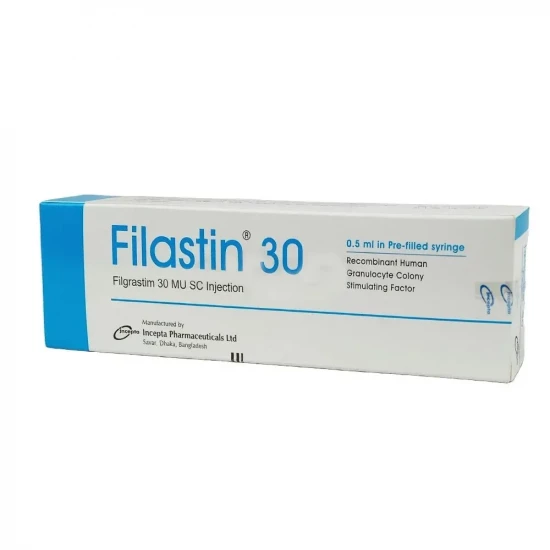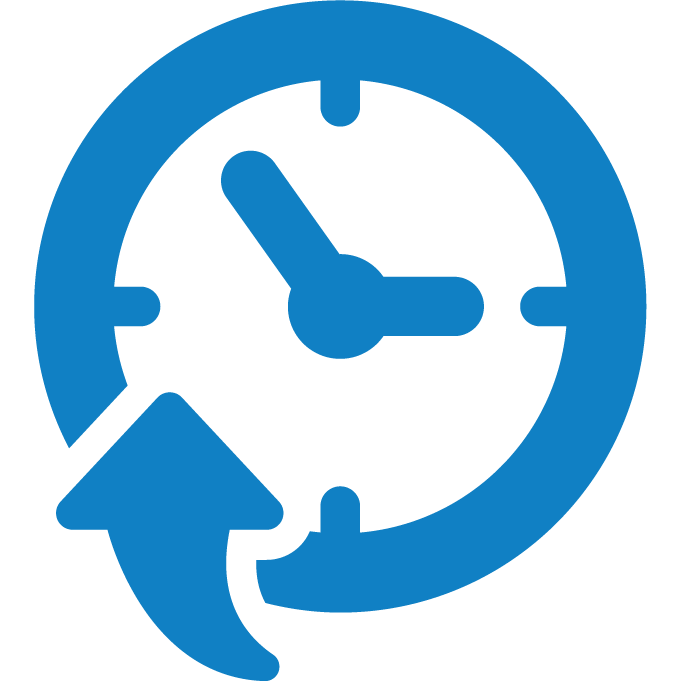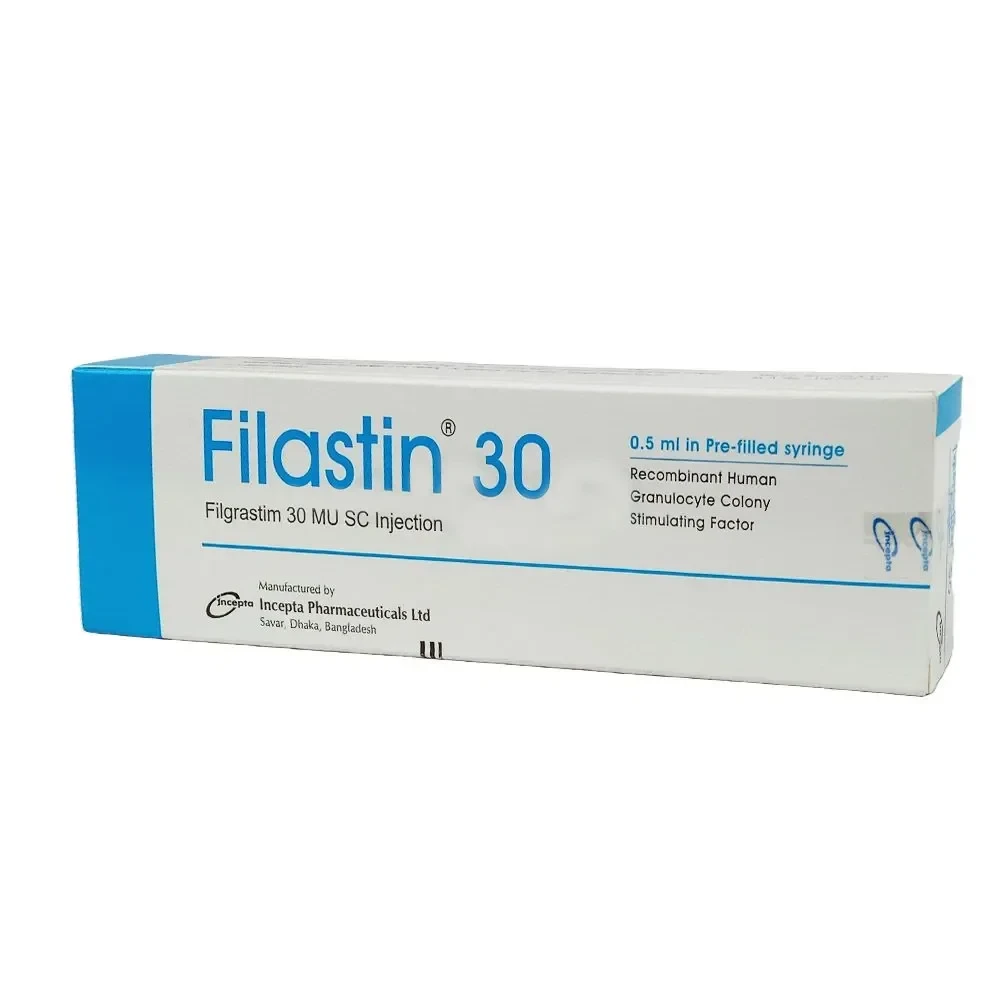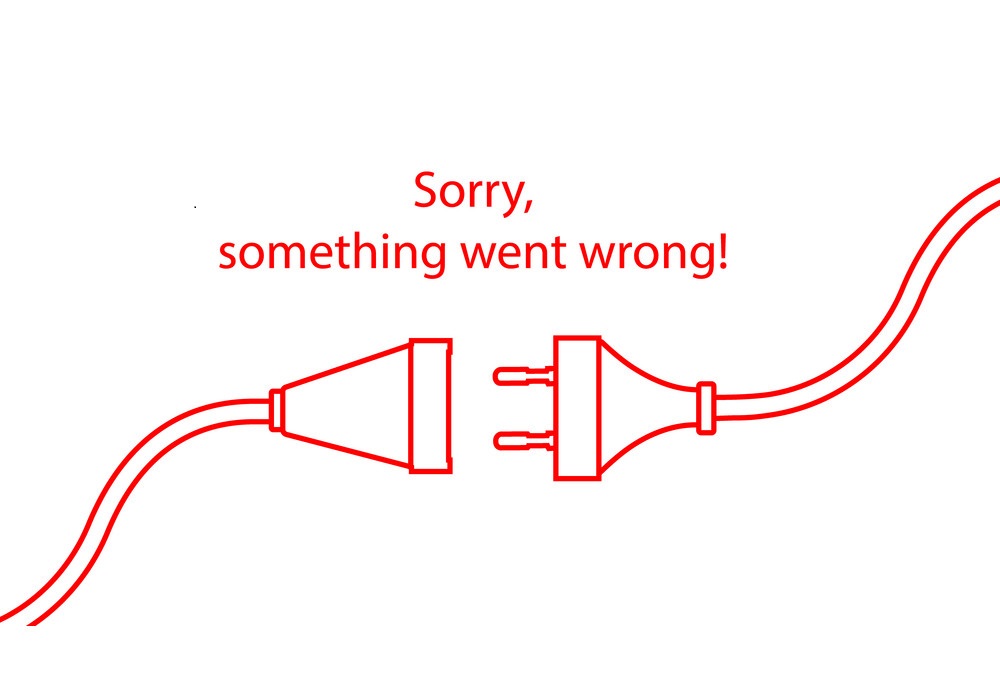
✔ 100% Authentic Product
👁️ Currently Viewing 2255
Filastin 30 Pre-Filled Syringe
Filgrastim is a recombinant human granulocyte colony-stimulating factor (G-CSF) composed of 175 amino acids. It promotes the production, maturation, and activation of neutrophils from bone marrow progenitors, enhancing immune functions like phagocytosis and antibody-mediated cytotoxicity.
It is primarily cleared by the kidneys, with nonlinear pharmacokinetics—its clearance depends on serum levels and neutrophil count. Peak levels occur within 2 to 8 hours after administration, and subcutaneous bioavailability is approximately 60–70%.
Discount
Price: ৳ 1,176
MRP:
৳
1200
2%
Off

100% Genuine Products, Guaranteed

Safe & Secure Payments, Always

Fast, Secure & Efficient Delivery

Proper Packaging
 Cash on Delivery - All over Bangladesh
Cash on Delivery - All over Bangladesh Regular Delivery - 12-24 Hours, Dhaka City* Charge Tk.39-59
Regular Delivery - 12-24 Hours, Dhaka City* Charge Tk.39-59 Regular Delivery - 24-48 Hours, Other Cities* Charge Tk.99-110
Regular Delivery - 24-48 Hours, Other Cities* Charge Tk.99-110
 ফ্রি ডেলিভারিঃ - ৯৯৯ টাকা+ অর্ডারে, ঢাকা
শহরে
ফ্রি ডেলিভারিঃ - ৯৯৯ টাকা+ অর্ডারে, ঢাকা
শহরে ফ্রি ডেলিভারিঃ - ২৯৯৯ টাকা+ অর্ডারে, ঢাকার
বাহিরে
ফ্রি ডেলিভারিঃ - ২৯৯৯ টাকা+ অর্ডারে, ঢাকার
বাহিরে
100% Genuine Products, Guaranteed
Safe & Secure Payments, Always
Fast, Secure & Efficient Delivery
Proper Packaging
 Cash on Delivery - All over Bangladesh
Cash on Delivery - All over Bangladesh Regular Delivery - 12-24 Hours, Dhaka City* Charge Tk.39-59
Regular Delivery - 12-24 Hours, Dhaka City* Charge Tk.39-59 Regular Delivery - 24-48 Hours, Other Cities* Charge Tk.99-110
Regular Delivery - 24-48 Hours, Other Cities* Charge Tk.99-110 ফ্রি ডেলিভারিঃ - ৯৯৯ টাকা+ অর্ডারে, ঢাকা
শহরে
ফ্রি ডেলিভারিঃ - ৯৯৯ টাকা+ অর্ডারে, ঢাকা
শহরে ফ্রি ডেলিভারিঃ - ২৯৯৯ টাকা+ অর্ডারে, ঢাকার
বাহিরে
ফ্রি ডেলিভারিঃ - ২৯৯৯ টাকা+ অর্ডারে, ঢাকার
বাহিরে
✅ Description:
Indications
1. Cancer Patients on Myelosuppressive Chemotherapy
Filastin helps reduce the risk of infection, such as febrile neutropenia, in patients with non-myeloid cancers who are receiving chemotherapy known to significantly lower neutrophil counts.
2. Patients with Acute Myeloid Leukemia (AML)
It shortens the duration of neutropenia and fever during induction or consolidation chemotherapy in AML patients.
3. Bone Marrow Transplant (BMT) Recipients
Filastin reduces both the length of neutropenia and associated complications (e.g., febrile neutropenia) in non-myeloid cancer patients undergoing high-dose chemotherapy followed by BMT.
4. Severe Chronic Neutropenia (SCN)
Used to reduce the frequency and duration of neutropenia-related complications such as infections, fevers, and mouth ulcers in patients with congenital, cyclic, or idiopathic neutropenia.
5. Acute Radiation Syndrome
Improves survival rates in patients exposed to myelosuppressive doses of radiation by promoting neutrophil recovery.
6. HIV-Related Neutropenia
Used in advanced HIV patients to prevent or treat persistent neutropenia and reduce the risk of bacterial infections when other options are insufficient.
✔️ Filgrastim 300 mcg/0.5 ml

✔️ Dosage & Administration: Chemotherapy-Induced Neutropenia:
0.5 MU (5 mcg)/kg/day SC or IV, starting no sooner than 24 hours after chemotherapy. Continue until neutrophil recovery (typically up to 14 days; up to 38 days for AML).
✔️ Bone Marrow Transplantation:
1.0 MU (10 mcg)/kg/day IV infusion. Start at least 24 hours post-chemotherapy and post-transplant. Titrate according to neutrophil counts.
✔️ PBPC Mobilization for Autologous Transplant:
1.0 MU (10 mcg)/kg/day SC for 5–7 days. Begin at least 4 days before leukapheresis.
✔️ Severe Chronic Neutropenia:
Congenital: 0.6 MU (6 mcg)/kg twice daily SC
Cyclic/Idiopathic: 0.5 MU (5 mcg)/kg once daily SC
Titrate based on ANC and CBC monitoring.
✔️ Radiation Exposure (Hematopoietic Syndrome):
1.0 MU (10 mcg)/kg/day SC once daily.
✔️ HIV-Related Neutropenia:
Start with 0.1 MU (1 mcg)/kg/day SC; titrate up to 0.4 MU (4 mcg)/kg/day to maintain ANC > 2.0 × 10⁹/L.
✔️ Common Side Effects
Chemotherapy patients: fever, pain, rash, cough, shortness of breath
AML: rash, nasal bleeding, general pain
BMT recipients: skin rash
PBPC mobilization: bone pain, fever, headache
SCN patients: anemia, nosebleeds, diarrhea, numbness, hair thinning
✔️ Interaction
Interactions are not fully established. Use caution with drugs like lithium, which can also stimulate neutrophil production.
✔️ Contraindications
Hypersensitivity to Filgrastim or its components
Patients with Kostmann’s syndrome (severe congenital neutropenia.
✔️ Pregnancy & Lactation
Pregnancy Category C
Animal studies show potential risk; human data is lacking.
Unknown if excreted in human milk—use with caution during breastfeeding.
✔️ Precautions
Do not use within 24 hours before or after chemotherapy
Regular CBC and ANC monitoring is required to avoid complications from high neutrophil counts
Risk of tumor stimulation in malignancy not excluded
Avoid diluting to concentrations below 5 mcg/mL
Can be diluted in 5% dextrose if needed
✔️ Storage
Store in a refrigerator at 2°C–8°C. Protect from light. Do not freeze. Avoid shaking the vial or pre-filled syringe.
⚠️Disclaimer:
At ePharma, we’re committed to providing accurate and accessible health information. However, all content is intended for informational purposes only and should not replace medical advice from a qualified physician. Please consult your healthcare provider for personalized guidance. We aim to support, not substitute, the doctor-patient relationship.






